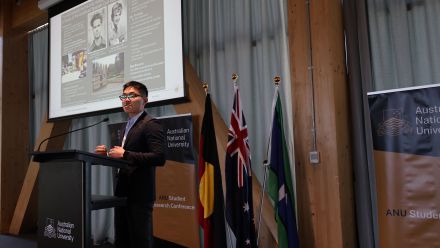Their Names Liveth For Evermore?
Anzac all too often is the story of soldiers, but women also suffered and also served.
Who do we remember when we come together on Anzac Day and who do we forget? Anzac all too often is the story of soldiers, but women also suffered and also served.
In May 1918, the hospital ship SS Kanowna drifted to a halt in the Indian Ocean. The ship's engines slowed, and those who could gathered on the foredeck. A service was read to the swelling ocean all around them. Then a sheet containing Narrelle Hobbes' body slipped into the deep.
Narrelle had been buried at sea some days sailing time from Australia. Her war had lasted four years; she nursed the sick and dying as far afield as Malta and Sicily, India and Mesopotamia. Despite disease, exhaustion, danger and injury, Narrelle had been steadfast in her service. 'You see them brought in,' she wrote, 'stretcher after stretcher, in that endless procession, every man somebody's boy. I will never give up till we are not needed.' And those 'boys' had come from every corner of the Empire and beyond. The Great War was a global tragedy - stricken patients from India and Africa, Britain, France and all its dominions came under her care. Narrelle also comforted those called the 'enemy' - like Vera Brittain she understood a dying man had no nationality.
Sister Hobbes was born in Tilba Tilba, New South Wales, and in her eagerness to serve she'd enlisted in the British rather than Australian forces. That meant Narrelle received none of the benefits extended to the men and women of the Australian army. It meant her pay was a quarter less, and that she was often set apart from the company of her fellow Australians. It also meant Narrelle Hobbes would not be counted as one of the nation's official war dead. Some 60,000 gleam in bronze in the cloisters of the Australian War Memorial. Narrelle's name is recorded on a sheet of paper in what the Memorial calls a 'supplementary listing'. She is marginal to the way we remember war.
Narrelle left behind a close circle of friends, countless grateful patients and a loving family. Her letters remain, evoking memories of wattle in the wintertime; sunsets behind the mountains, wind rustling through forests of eucalypt, the scent of summer rain. Every letter Narrelle wrote home ended with her characteristic farewell, pledging 'oceans of love' to Australia.
In 1919, the town of Tilba Tilba raised their war memorial. An obelisk of stone, it looks out across the fields and the mountains. Like so many other war memorials raised in Australia's cities and towns, the pillar carries its burden of names: one in every four of Tilba Tilba's families lost someone in that war. But one name is missing: Narrelle Hobbes, a daughter of the district, whose body was committed to the deep almost within sight of the land she loved.
This Anzac Day, The Australian National University will tell the story of Narrelle Hobbes, reminding us of those who fall outside the official ambit of remembrance. In a special Anzac Day Broadcast, three ANU historians will trace her remarkable journey across the globe.
Story by Professor Bruce Scates, School of History, ANU College of Arts and Social Sciences


